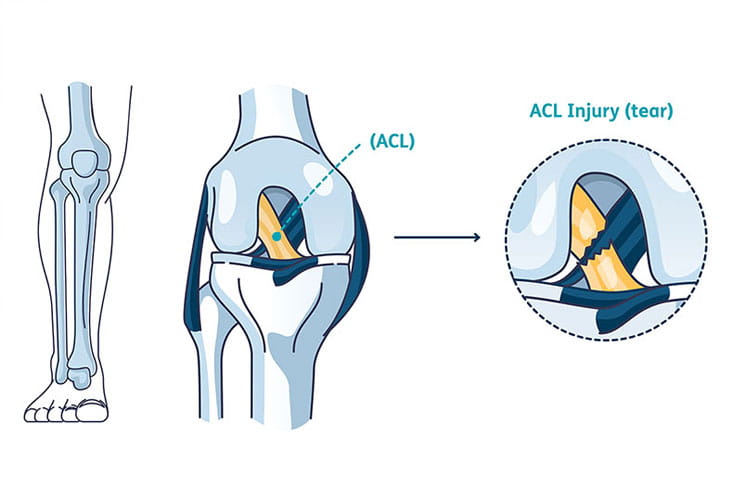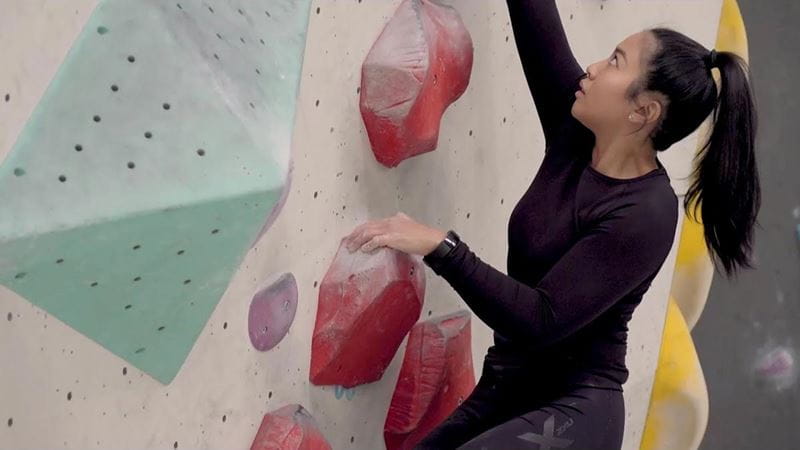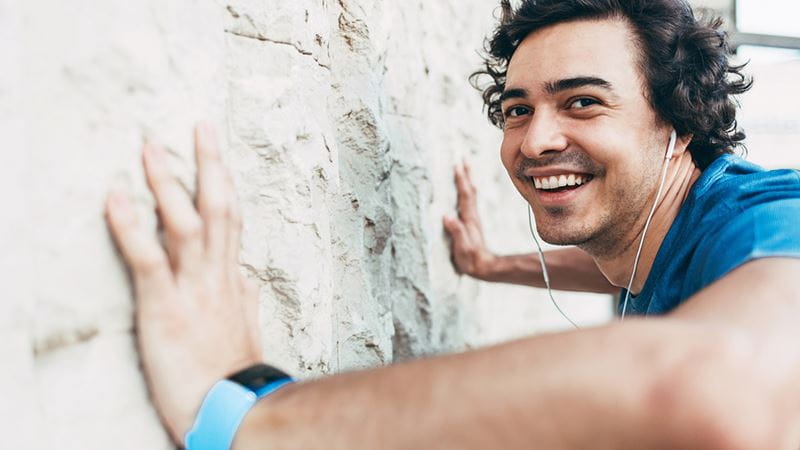Blog article
Do you need ACL reconstruction? Insights from a physio who's been there

Hurting your ACL (Anterior Cruciate Ligament) can be a real setback, and getting back to your usual self takes time — anywhere from six months up to a year1 before you're back in action or ready for sport. The upside is surgery isn’t always on the cards, and a lot depends on whether your knee is giving way or not.
Fortunately, these days the procedure is performed by keyhole surgery to minimise the surgical trauma1. Jakub from HBF Physio explains more - he also speaks from experience, having recovered from two of his own ACL surgeries.
Know what to expect: The out-of-pocket costs of ACL surgery explained
What is an ACL?
There are four ligaments in the knee joint. These ligaments are structures that help to control movement in the joint and keep the knee stable.
The anterior cruciate ligament (ACL) is one of these ligaments and connects the thighbone (femur) to the shinbone (tibia).
“If an ACL is damaged, the knee often becomes unstable and can give way when loaded. Over time, this damage can affect other structures in the knee,” says Jakub.

How do I know if I need ACL reconstruction surgery?
You’ll need to get an assessment from a medical professional to understand when reconstruction may be required, but signs that a knee reconstruction may be necessary include:
- Instability
- Functional impairment/loss of motion
- Secondary damage to the internal structures
- Rapid swelling of the knee
- A ‘pop’ in the knee when the injury happens
Jakub says that an MRI scan is the best way to diagnose an ACL injury. However, research shows that a detailed history and physical exam by an experienced health professional can be just as accurate. Because of this, the Royal Australian College of General Practitioners recommends only getting an MRI if the diagnosis isn’t clear after your doctor examines you, or if the result might change the type of treatment you need.
A helpful resource you might find useful is available on NPS Medicinewise. It can assist you in thinking about what matters most to you if you’re considering surgery.
What does ACL surgery involve?
An ACL reconstruction is usually performed by keyhole surgery and generally takes between an hour and 90 minutes.1
“A typical ACL repair is done by grafting tissue, from either the hamstring or patellar tendon, into an anatomically correct position within the knee,” explains Jakub“The torn ACL is removed, and the new tissue is grafted and fixed into place with special screws where it acts as a scaffold for new tissue growth and maturation. Over the next 12 months, the graft tissue slowly matures and strengthens.” says Jakub
What is the recovery time?
According to Jakub, your recovery time depends on how much your knee and other structures were damaged and/or repaired in the surgery, but here are some general things to expect.
- Patients usually stay in hospital overnight and go home on day two.
- You should be able to walk with crutches after a day or two, and you may need to wear a knee brace for the first few weeks.
- The acute pain and swelling typically clears in the first 4 to 6 weeks and the knee will then feel weak but mechanically normal.
“The most painful phase of recovery lasts 1 to 2 weeks, where pain control, swelling control and range of motion are the key goals.” Jakub adds
How can I recover well?
Surgery is generally very effective if patients follow some key steps and return to activity in the appropriate timeframes. From Jakub's experience, he says "12 months is widely accepted as a safe time to return to full contact, full-intensity sport."
Ways to recover well include:
- Keep moving - be sure to visit a medical professional for suitable rehabilitation exercises and programs.
- Look after your mental health too - feeling down after surgery is common - Seeking a support group is a great place to start, and you can also look into talking to a professional such as a GP, counsellor, or psychologist.
- Self-care - stay active and practice meditation for physical and mental health.2
- Sleep well - Avoid sleeping on your back with a pillow under your knee as this may cause further damage to the knee. Any other positions that are comfortable are fine.
HBF Physio tip: It’s important to be aware that between 6- and 12-weeks post-surgery while the swelling has reduced and your knee might start feeling more 'normal' the graft is still weak and in the repair phase. Often people don't feel a lot of pain in this period and may become overconfident, so make sure you stick to your rehab plan and don't overdo anything that may risk injury to the new graft.
How can I cover the cost of ACL surgery?
You can choose to access the public or private health system for ACL surgery.
- Public hospitals may have long elective surgery wait lists, and you can’t choose your surgeon. As of 2025, the wait times for ACL (Anterior Cruciate Ligament) reconstruction surgery in public hospitals vary significantly depending on location and hospital capacity.
- With private cover, you’ll be able to choose your specialist and avoid long waiting times. The right level of hospital and extras cover will cover medical specialists’ fees, as well as specific hospital treatments and services such as ACL reconstructions, anaesthesia and physiotherapy.
HBF Member Story: Claire’s Netball Twist
Claire injured her knee while playing netball—a sport she’s played her whole life. On this particular night, she twisted it in a certain way and felt immediate pain. She left the court, and while the pain eased after a couple of days, the swelling lingered a bit longer.
She then went overseas for a two-week holiday. Although the knee wasn’t painful during the trip, it felt oddly unstable and weak. Upon returning, she visited a physiotherapist and was referred for a scan, which revealed a torn ACL.
The road to surgery
Having seen several friends recover well from ACL tears without surgery, Claire was keen to explore whether a non-surgical path might work for her too. Unfortunately, weakness persisted many months (and exercises) down the line, and a few falls were enough for Claire to decide with her health team that surgery was the best option.
The surgery for Claire was seamless, and while she won’t be returning to her netball glory her knee has fully recovered and her commitment to physio and Pilates is seeing her stay strong.
Claire’s biggest learnings and bonus advice:
- Mentally prepare for the surgery but also the recovery, ‘being a social person I wanted to make sure I was mentally prepared for the lack of social stimulation – which was a big reason in choosing winter as my surgery season. Luckily, having private health insurance allowed me this freedom.’
- Speaking of private health insurance, if you are covered for ACL surgery be sure to do your research on your health funds network. ‘I asked around for recommended surgeons and made sure I chose one who was part of HBF’s Member Plus network and who operated out of a Member Plus hospital. I asked my surgeon to use a fully covered anaesthetist and assistant surgeon to ensure my out-of-pocket costs were at a minimum.
- Pre-hab! ‘Get your legs as strong as possible before going in, so you’ve got a good base to build from post-surgery. I’d recommend finding a Physiotherapist lead Pilates class, so they can help build a program that is specific to your needs and operation type.
- Prep for post-surgery. ‘Looking back I would buy more ice packs! I got sent home with one but I wanted to keep them on high-rotation to reduce swelling and pain and so had to buy multiples.’
HBF Members Top Tip: If you’re planning for surgery, don’t forget to investigate our network of Member Plus hospitals and surgeons. This can help reduce your out-of-pocket costs. Visit MyHBF to check your level of cover or call 133 423



